Microgreens have become a popular choice for urban farmers looking to grow their own food in a small space, much like an urban farm.
These tiny greens are packed with nutrition and flavor, making them an ideal way to add freshness, texture, and color to any meal or to your urban garden.
Not only are they easy to cultivate indoors or outdoors, but they also require minimal effort compared to other types of gardening.
The most popular types of microgreens for urban farmers are arugula, basil, chard, kale, cilantro, and radish.
In this article, we’ll explore why these delicious little plants have become popular among city dwellers and provide helpful tips on how you can start growing your own microgreens today!
The most popular microgreens
Not only do microgreens look great on the plate or in the kitchen window, but they also pack a punch when it comes to flavor and nutrition. Microgreens are famous for being full of antioxidants and vitamins.
From mild-flavored pea shoots to spicy mustard greens, there is no shortage of microgreen varieties available for the urban gardener or chef looking for an exciting addition to their menu.
The most popular microgreens to grow are arugula, basil, chard, kale, cilantro and radish. These greens can easily thrive indoors or outdoors with minimal effort to provide a constant supply of fresh produce.
Broccoli microgreens
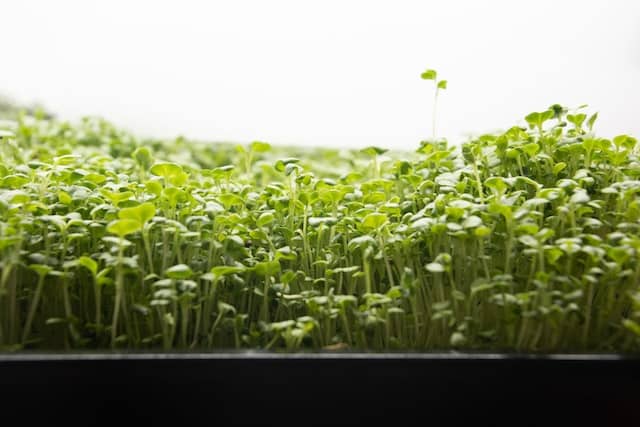
Broccoli microgreens are a favorite among many due to their peppery, nutty flavor and slight hint of sweet cabbage. They are full of antioxidants and vitamins A, C, and K.
Broccoli can be harvested in just 10-14 days, making it a great option for those looking to enjoy freshly grown microgreens in a short amount of time.
Basil microgreens
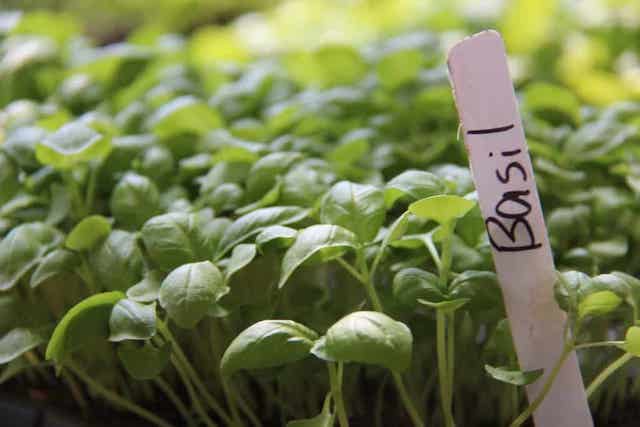
Basil microgreens have a sweet, fragrant aroma that can instantly make any dish stand out. They are also full of vitamins A and K and can be harvested within 2-4 weeks.
Radish microgreens
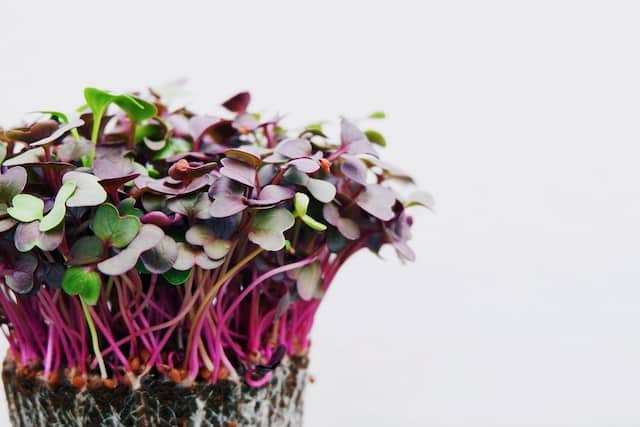
Radish microgreens have a spicy flavor, or tangy flavor and can be quite pungent when eaten raw. They are high in vitamin C, calcium, magnesium and potassium.
Growing radish microgreens is rather easy and they make a great addition to salads, sandwiches and wraps.
Radish can be harvested in 7-14 days and can be grown indoors or outdoors in small containers.
Kale microgreens
Kale microgreens are highly nutritious and are a favorite among health-conscious consumers. They have a mild, slightly sweet flavor and are packed full of antioxidants, vitamins A, C, E, K, and B6 as well as minerals such as calcium, iron and potassium.
Kale can be harvested in 12-21 days and is easy to grow indoors or outdoors in containers.
Mustard microgreens
Mustard microgreens have a spicy, sharp flavor and are popular among chefs who like to add a bit of zing to their dishes. They are high in calcium, iron and vitamins A, C and K.
Mustard microgreens can be harvested in 12-14 days and can be grown in containers or beds.
Amaranth microgreens
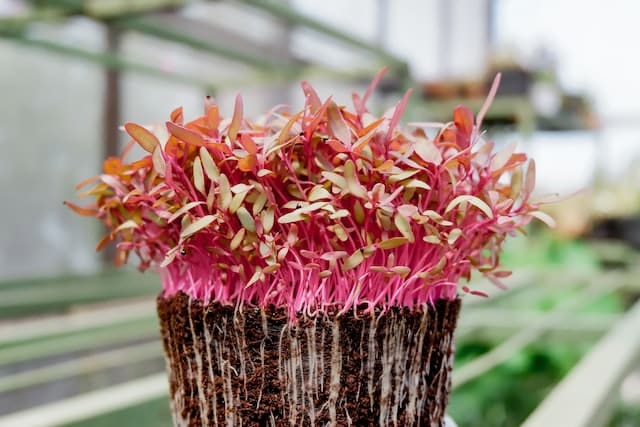
Amaranth microgreens have a mild, earthy flavor that pairs well with salads or sandwiches. They are high in iron, magnesium and vitamins A, C and K.
Amaranth microgreens grow best outdoors and can be harvested in 7-14 days.
Cress microgreens
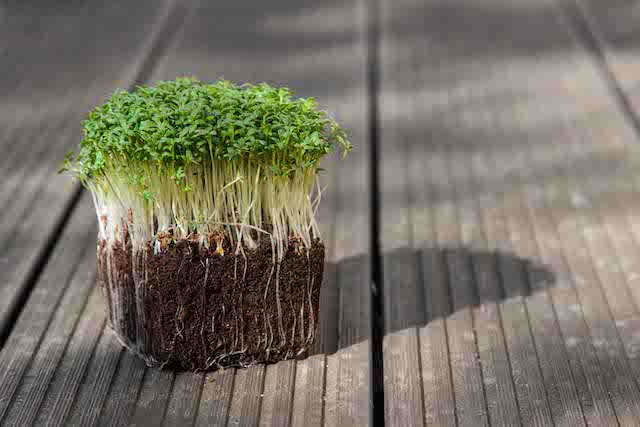
Cress microgreens have a mild flavor and tangy finish that adds zest to salads or sandwiches. They contain vitamin C, beta carotene and chlorophyll.
Cress microgreens can be harvested in 7-10 days and are easy to grow indoors or outdoors in containers.
Arugula microgreens
Arugula microgreens have a strong, peppery taste and are often used as a salad green or garnish to give dishes an extra kick of flavor. They are packed full of vitamins A, C, E, and K as well as cancer-fighting phytonutrients.
Arugula microgreens can be harvested in 10-14 days and are easy to grow in containers or beds.
Sunflower microgreens
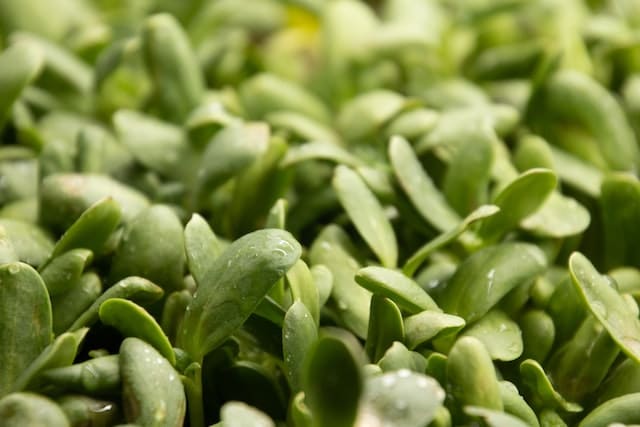
Sunflower microgreens have a mild, nutty flavor and are high in proteins, fiber, vitamins A and C, calcium and magnesium.
Beet microgreens
Beet microgreens have a sweet, earthy flavor and are high in iron, calcium and vitamins A and C.
Beet microgreens grow best outdoors in containers or beds and can be harvested in 7-14 days.
Cabbage microgreens
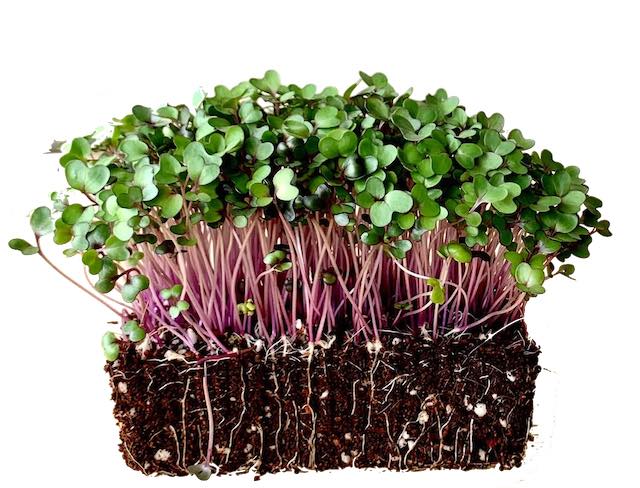
Cabbage microgreens have a mild, sweet flavor and are rich in minerals such as calcium, magnesium and potassium. They are also high in vitamin C and phytonutrients.
Growing cabbage microgreens is like most other microgreens pretty easy and they can be harvested in 10-14 days.
Microgreens seeds
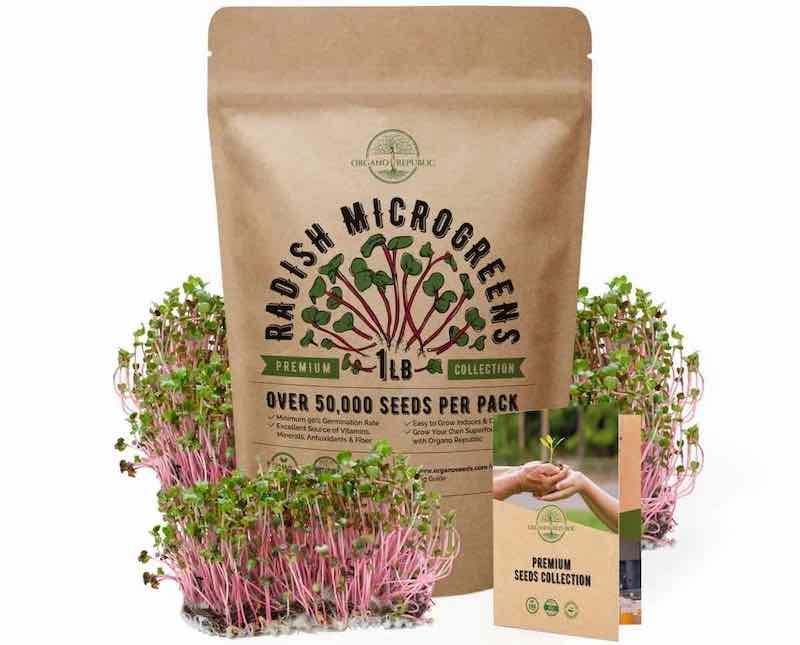
Many microgreens enthusiasts have spent years experimenting to develop a line of many organic seeds for microgreens with rich varieties of flavors, colors and shapes.
Microgreen seeds are offered in a variety of sizes and are easy to grow, making them perfect for beginner gardeners. There are plenty of “starter packs” available from most stores.
Split seeds, such as radish and cress, can also be grown in small containers and harvested within weeks. With a little bit of care, microgreen seeds will provide you with an abundant crop of fresh, flavorful greens that can be enjoyed year-round.
Most popular microgreen seeds
The best starter seeds for growing microgreens in our opinion are: sunflower seeds, arugula seeds, basil seeds, cilantro seeds, and broccoli seeds. Radish seeds are also known to grow fast without much attention.
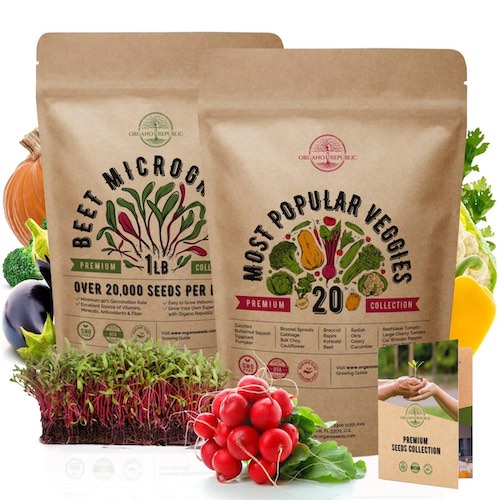
Organo Republic Microgreens
Made in the USA by Small Family-Owned Business. Our microgreens and sprout seeds are tested at the highest germination rates before being sealed to last for up to 3 years.
Advantages of Growing Microgreens
Microgreens offer some great advantages to urban farmers who don’t have the space or resources for large-scale gardening.
First, they require less time and effort to grow than regular greens, as they can be harvested in just a few weeks.
Additionally, microgreens are usually grown indoors (or in a greenhouse) and don’t require large amounts of water or soil.
Finally, growing microgreens is very economical; a small packet of seeds can produce multiple harvests over the course of several months.
Most profitable microgreens
Broccoli microgreens dominate the market share of microgreens, accounting for a whopping 25% of all microgreens sold.
And it’s for a good reason, it’s known to be hugely profitable when comparing time to harvest and selling price (up to $40).
Below you’ll see an overview of all necessary information you need to know before making a decision on what microgreens to farm if you’re only after high profitability and yield.
| Microgreen | Time to Harvest (Days) | Length at Harvest (Inches) | Average Price at Market (Per pound) |
|---|---|---|---|
| Broccoli | 7 to 14 | 2-3 | $25-$40 |
| Arugula | 10 to 12 | 1-3 | $20-$25 |
| Mustard | 5 to 14 | 1 -3 | $15-$20 |
| Cress | 8 to 12 | 2-3 | $10-$20 |
| Cabbage | 5 to 14 | 2-3 | $20-$25 |
| Radish | 8 to 10 | 2-3 | $25-$40 |
| Sunflower | 12 to 14 | 2-3 | $35-$40 |
6 Quality tips for growing your microgreens to new heights!
Buying microgreens to grow at home can be a great way to have fresh, organic greens year-round. Here are some tips for getting the most out of your microgreens:
- Start with quality soil – Before you start planting, make sure your soil is nutrient-rich and has a good water-holding capacity.
- Choose the right container – For best results, use shallow trays or planters that are at least 6-8 inches deep.
- Plant your seeds densely – Yield more from your microgreens by planting the seeds very close together, about 1 to 2 inches apart.
- Water regularly – Keep the soil moist but not soggy. Water your microgreens every day or two depending on the weather.
- Fertilize – Fertilizing your microgreens can help them grow bigger and better. A diluted fertilizer solution every two weeks should do the trick.
- Harvest – Once your microgreens are tall enough, harvest them with scissors and enjoy!
How to harvest and store your freshly grown microgreens
Harvest your microgreens when they reach 2-3 inches tall and are no longer “baby” greens. Use sharp scissors to snip off the tops of the plants, making sure not to damage the stems or roots.
After harvesting, make sure to store your microgreens in an airtight container or plastic bag to preserve their flavour and freshness.
Microgreens are best when used within a week of harvesting, but can stay fresh in the refrigerator for up to two weeks.
You can also freeze your microgreens for longer storage (up to 6 months). Simply blanch the greens first, then spread them on a baking sheet and freeze them for a few hours before transferring them to an airtight freezer bag.
Summary
Microgreens are nutrient-rich, fast-growing plants that can be harvested in just a few weeks. Popular microgreen seeds include sunflower, arugula, basil, cilantro and broccoli.
Growing microgreens is economical as a small packet of seeds can produce multiple harvests over several months. Broccoli microgreens dominate the market share due to their high profitability when comparing time to harvest and selling price (up to $40).
To get the most out of your microgreens it is important to use quality soil and containers that are at least 6-8 inches deep; plant densely; water regularly; fertilize every two weeks; and harvest with scissors once they reach 2-3 inches tall.
Microgreens should be stored in an airtight container or frozen for longer storage up to 6 months. Enjoy your freshly grown microgreens within a week of harvesting.
Hopefully this article can inspire you to get started with microgreens!
FAQ – Growing Microgreens: The Most Popular Ones
The most popular microgreens are broccoli, radish, kale, mustard, amaranth, cress, arugula, and sunflower. Broccoli dominates the market, there are report the market share of broccoli is about 25%.
The most profitable microgreens are the ones that have higher yields and can be harvested quickly. Broccoli, radish, mustard, amaranth, and cress are all fast-growing microgreens that can be harvested in 7-14 days and have higher yields than other varieties.
The best tasting microgreens are a matter of personal preference. Some people prefer the mild flavor of sunflower, amaranth and spinach microgreens while others like the more spicy flavors of arugula, radish and mustard greens.
Amaranth and sunflower microgreens are two of the easiest to grow. They have a short germination time (2-3 days) and can be harvested in as little as 7 days. They also require very little maintenance and are relatively forgiving.
Broccoli microgreens are the most nutritious microgreen variety. They are rich in vitamins A, C, and K as well as calcium, iron, magnesium and potassium. They are also a good source of dietary fiber.
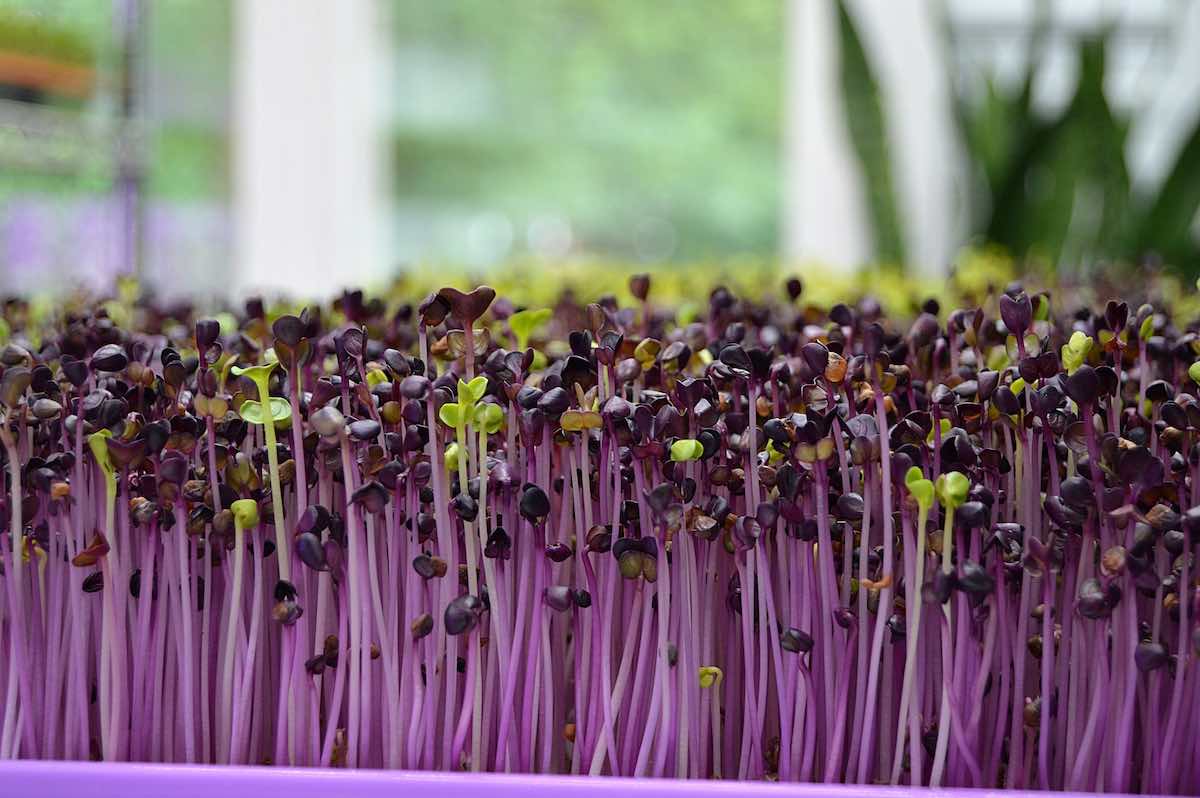
One reply on “Growing Microgreens: The Most Popular Ones Rising to Fame Among Urban Farmers”
[…] The Most Popular Microgreens to Grow […]